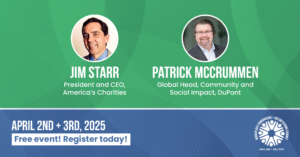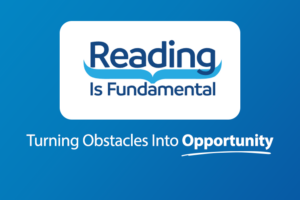Steve Delfin | October 3, 2012
“Wow Factor of Workplace Giving Programs” Step #2: Offer More Options
Last week, we assessed what your company and its employees both want in a workplace giving program and presented some key factors that can make your program successful and stronger. Today, we will dig a little deeper and discuss a key factor, “more options.” Does charity choice matter? Does it make campaigns more effective? How does choice influence involvement? There is strong evidence that charity choice has a significant, positive impact on individuals’ willingness and attitude towards participation and supporting a cause. America’s Charities will be releasing a report with more findings on this soon (contact me if you would like to be the first to receive a copy), but for now I’d like to share a study that was recently published in The Journal of Marketing.
The Roller Rink Study:
Stefanie Rosen Robinson, Caglar Irmak and Satish Jayachandran recently conducted a series of studies and published them in their report, “Choice of Cause in Cause-related Marketing.” One of their field experiments took place at a roller rink where all forty-one of the participants were parents or guardians of children skating at the rink. The roller rink sold candy and snack items at its concession stand, and one popular sour chew candy was selected as the item of interest for the study. As the parents approached the concession stand, they were told that the skating rink was partnering with four charities and that all proceeds from the sale of this candy would help those charities. There was no price tag on the candies; the parents could choose to pay as much as they wanted for them, and the full amount they paid would be donated to the charities. The four causes were chosen based on earlier research showing what types of organizations the parents would be inclined to care about.
Here’s where it gets really interesting – of the participating parents:
- Half were told that the skating rink was contributing proceeds of the candy money to a set of causes, and the rink would decide how the money would be divvied up between the charities. The other half were told the same thing, except that THEY could choose which charity benefited from their purchase (the choice was theirs).
- On average, parents paid far more for the candy −$2.17−when they were able to choose which cause to support. However, when the roller rink determined how the money would be divvied up, parents paid an average of only $0.72.
Conclusion of the roller rink study –
In the roller rink study, individuals were willing to pay more for something when they got to choose a cause to support versus having someone else choose for them. Why? Individuals value choice and the effect of that choice is enhanced when individuals feel a strong personal role in helping a charity.
Implications of Providing More Charity Options:
In addition to performing the roller rink study, Robinson, Irmak and Jayachandran conducted three other field studies. I won’t go into too much detail on those studies; I’ll let you click here to read them. But, there were some interesting findings from these other cause marketing and related consumer studies that are worth noting:
If there is a logical and strategic fit between the company and the cause or causes it supports (i.e. a financial institution that supports charities that provide financial literacy programs), the consumer is more likely to support that company’s efforts and causes because of that logical alignment. However, if a company supports a cause or charities that does not appear to the consumer to align with the company’s values or business (i.e. a sugary soft-drink product supporting diabetes research), then consumers are more likely to make a different choice in the product and service they use.
What this means for your company and your workplace giving campaign?
Today most employers see the value in offering its employees giving choices. However, many employers also have a specific cause or cause area (women’s issues, environment, health) that align strategically with that employer’s external relations and position in the market. If those causes logically connect in the mind of employees, you can and should feature them in your workplace giving programs. That doesn’t preclude the need for a wide range of other choices, but why not provide employees the opportunity to choose to engage and support those causes.
Here’s a perfect example. At America’s Charities one of our more visible charity members is The Wounded Warrior Project (WWP) whose mission is to honor and empower wounded warriors. They do this by raising awareness and enlisting the public’s aid for the needs of injured service members; helping injured service members to aid and assist each other; and providing unique, direct programs and services to meet the needs of injured service member such as job training and placement.
Many employers that America’s Charities works with are highly engaged with and have strategically aligned some or all of the philanthropy, community relations and broader social responsibility initiatives with helping the military personnel and their families. Because of that we are encouraging those employers to consider partnering with WWP and, where they are already strategically aligned, featuring WWP in their employee workplace giving and employee engagement efforts.
The Bottom Line:
Choice is a many faceted thing. We have learned from cause-marketing and other consumer research that choice is important and people react differently to it in different situations and circumstances. Sometimes too much choice makes decision-making difficult. Too few choices and the consumer feels like they haven’t been given an opportunity to consider reasonable options. In employee workplace giving, choice is crucial. From my days with United Way I learned that employees were incensed by the lack of choice. Over the years we’ve also seen strategic philanthropy evolve with more and more employers connecting their institutional giving with causes and organizations that align strategically with the company’s business strategies.
In those cases, it is logical and strategic for the employer to offer and even feature the institution’s charity partners as a choice for employee workplace giving. It’s not an either or proposition. Most importantly, if you as an employer do have strategic philanthropy partners and do want to feature them in your workplace giving programs, it is a perfect opportunity to engage and educate your employees as to why you’ve chosen those partnerships and why giving to them and engaging with them is worthy of consideration.
But again, choice is nuanced. Choice isn’t a Russian election of three pre-approved, company endorsed and supported causes. Choice must be real, it must represent the giving interests of all employees, it must be transparent, and it must be information based with the ability for employee donors to give and connect to the causes they care about.
Finally, understanding how and when to enhance the role employees play in your company’s workplace giving campaign and other philanthropic initiatives will ultimately help you design more effective programs.
We’ll continue this discussion next week and delve into the other two factors from last week’s post, “trust” and “more involvement,” and hopefully help you figure out which of the types of workplace giving programs in this chart is the best match for your company.
Steve Delfin
|
Get Resources and Insights Straight To Your Inbox
Explore More Articles
Workplace Fundraising + Volunteering Summit (April 2nd and 3rd, 2025)
Join us in attending this virtual summit! The America’s Charities team is joining up with other leading voices in the workplace giving space for a…
Read ArticleThe Time to Act is Now
The results of the 2024 National Assessment of Educational Progress (NAEP) are in, and the findings are, in a word, heartbreaking. This assessment serves as…
Read ArticleOpen Position: Non-Profit Account Manager, Employee Assistance Funds & Scholarships (Remote – Full Time)
We are professional, agile, customer-centric and our goal is to inspire employees and organizations to support causes they care about. We help nonprofits fundraise unrestricted,…
Read ArticleGet Resources and Insights Straight To Your Inbox
Receive our monthly/bi-monthly newsletter filled with information about causes, nonprofit impact, and topics important for corporate social responsibility and employee engagement professionals, including disaster response, workplace giving, matching gifts, employee assistance funds, volunteering, scholarship award program management, grantmaking, and other philanthropic initiatives.


 Steve has 30 years of experience working in and with major national and international not-for-profit organizations and socially-responsible international corporations, including a long history of engagement with and leadership around workplace giving and employee volunteerism programs.
Steve has 30 years of experience working in and with major national and international not-for-profit organizations and socially-responsible international corporations, including a long history of engagement with and leadership around workplace giving and employee volunteerism programs. 

